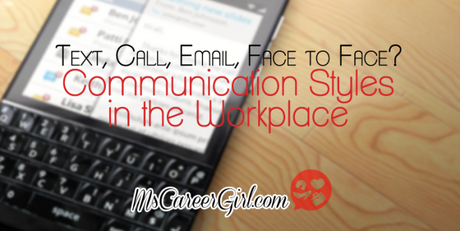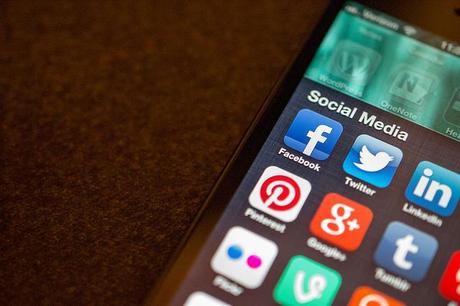
With all of the available ways to communicate in today’s digital world, including calling, texting, tweeting, facebook chat, google chat, snap chat, instagram, vine, etc., there is no shortage of ways to get ahold of someone. Even more, in the workplace, we rely heavily on e-mail, internal chat programs and phone calls to gather information and achieve our daily tasks. Which do you use? More importantly, why?

Here are a few situations where tailoring your communication style in the workplace can help you achieve your goals:
1. When working on a cross-functional project
- Before you fire off that task list to the people on your team, consider if the subject matter actually requires a meeting, whether it is face-to-face or a conference call (and vice versa).
- Look at the contents of what you have written to consider its perception from someone who is unfamiliar with the progress of the project so far. Would it still make sense?
- Ask for only the time you need and confirm with the other parties involved that they understand why you’ve asked for their participation.
2. When you need a question answered
Consider the job responsibilities of the person you are looking to get a response from.
- Are they a Director or CEO, coaching their staff individually all day?
- Are they a sales person, constantly pounding the phones to make the next deal?
- Perhaps they are part of your finance department, auditing budgets and paying your bills.
All three of these people will respond to communication differently. Be aware of the commitments their position requires, and tailor your communication accordingly:
- The Director or CEO in this situation would most likely prefer a face to face meeting (or a phone call if distance prohibits that).
- The sales person might prefer a phone call or an email so they can respond between client calls.
- Your finance department may prefer email communication to a phone call, so they don’t need to break concentration for a question that can wait.
Interruptions are our number one enemy in the workplace. All of the ways we are able to communicate with one another also serve as distractions, but as it becomes more important to increase productivity and do more every day, it is equally important to assess your surroundings and ensure that you are communicating in a way that your audience is receptive to.
3. When building internal relationships
Take these clues into consideration:
- Is the person you are getting to know more traditional or more progressive?
- Have they been a mentor before? (If that’s what you’re looking for)
- How have you seen them interact with others?
If the person you are trying to reach is known for more traditional working styles, you should ask them to have a one on one meeting or even leave the question open ended to their preference. If they are more progressive, you could rely on digital communication or even use social media. But if you swapped these two styles around, you could risk missing a connection with the more traditional person and rubbing the more progressive person the wrong way.

How do you manage collaborating with colleagues with different communication styles? Do you go with what you prefer or what they prefer? Sound off in the comments below!
Photos: Jason Howie (top – apps – flickr) and Bruno Girin (bottom – banksy – flickr)

